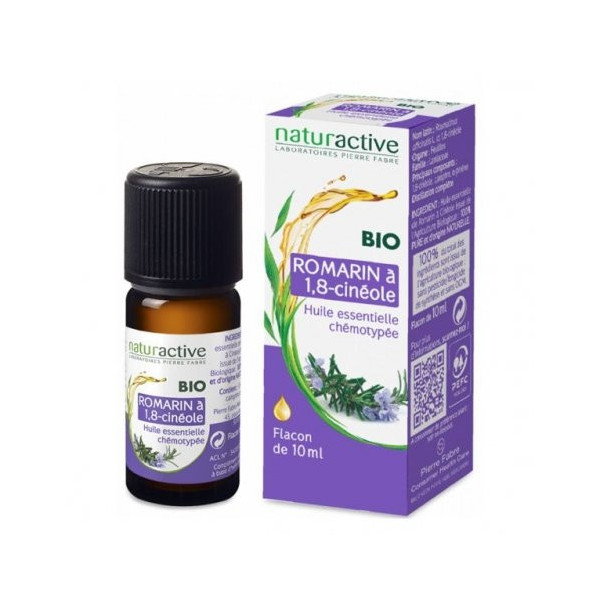Indications of Organic Rosemary cineole essential oil
Used for respiratory or benign ENT infections (anti(septic EO for the respiratory tracts). Locally, it participates in the relief of muscle contractures.
Botany information
Rosmarinus officinalis ct 1,8-cinéole Botanical family: Lamiaceae Producing organ: flower head anf branch Chemotype: 1.8 cineole, limonene, beta-pinene Origin: Tunisia or Morocco
Botany specifications
Adapted to suit the barrenness of the Mediterranean garrigue, the Rosemary plant produces branches with linear leaves which give out a camphor scent. In the Middle-Ages it was a major plant of the herbularium, the medicinal garden in the heart of abbeys.
Use
Diffusion ++, Bath ++, Massage ++, Orally +
Ambient setting: on its own or in a mixture by regular low heat evaporation.
Atmospheric diffusion: not recommended
Dermal application: diluting, 5-15% (maximum 30%) in vegetable oil.
Orally: diluted with some vegetable oil - only after medical agreement (contains camphor). 1 drop 3 times per day.
Inhalation: not recommended
Practical advice
Important to know : Warning: there are two other chemotypes of medicinal rosemary which have different effects on the body.
Respiratory comfort : When nasal/bronchial secretions interfere with breathing: mix 100 drops of rosemary 1.8 cineole EO + 15 drops of thyme thymol EO in a 30ml bottle finished with macadamia vegetable oil. Apply 3-4 times per day (chest, elbow creases, wrists or sole of the foot). In case of persistent blockage, consult your doctor.
Massage-Bronchitis: 2-5 drops of rosemary cineole EO + 3 drops of niaouli EO in 15ml of apricot kernel vegetable oil. Massage onto the thorax before going to sleep for 3-5 days.
Diffusion-Mucous blockage: 15 drops of rosemary cineole EO + 15 drops of niaouli EO + 15 drops of mountain pine EO + 15 drops of eucalyptus globulus EO.
Contraindication
It contains camphor and eucalyptol. Not recommended for pregnant or breast feeding women or children under 12 years of age.


 100% secure payment, Customer Satisfaction
100% secure payment, Customer Satisfaction
 Order shipped within 24 hours from Monday to Friday*
Order shipped within 24 hours from Monday to Friday*



